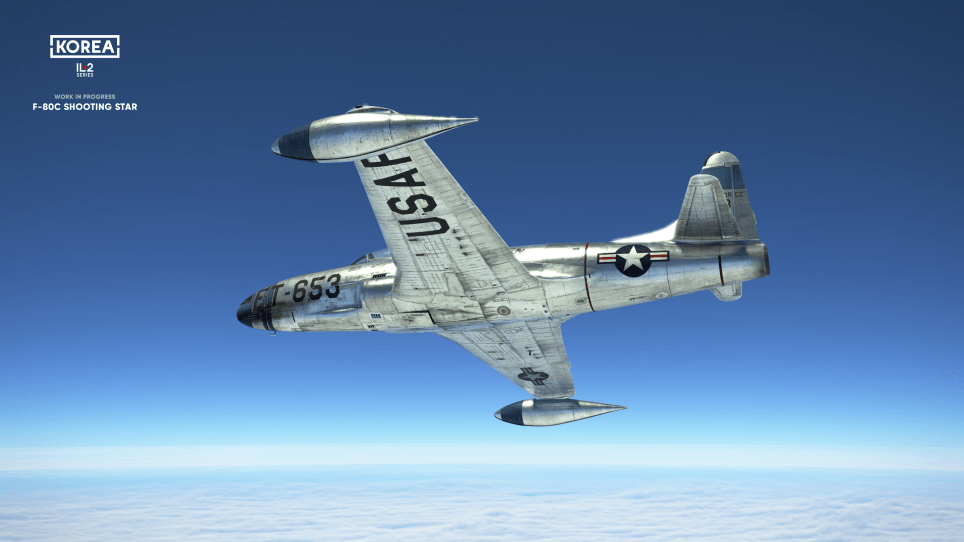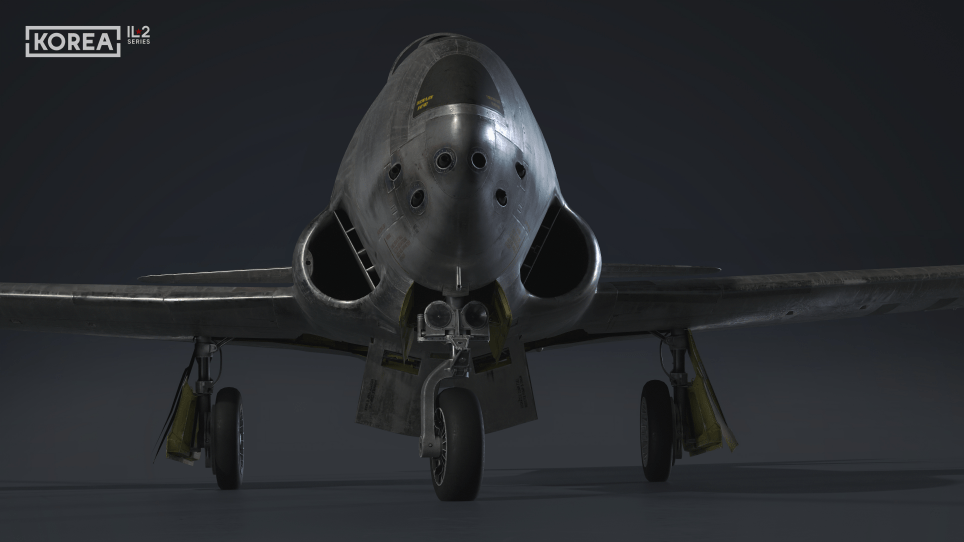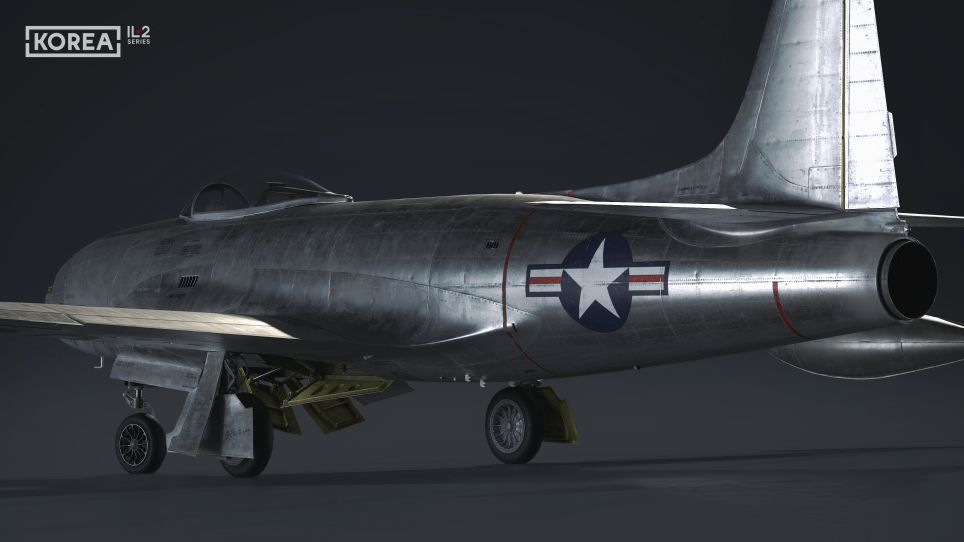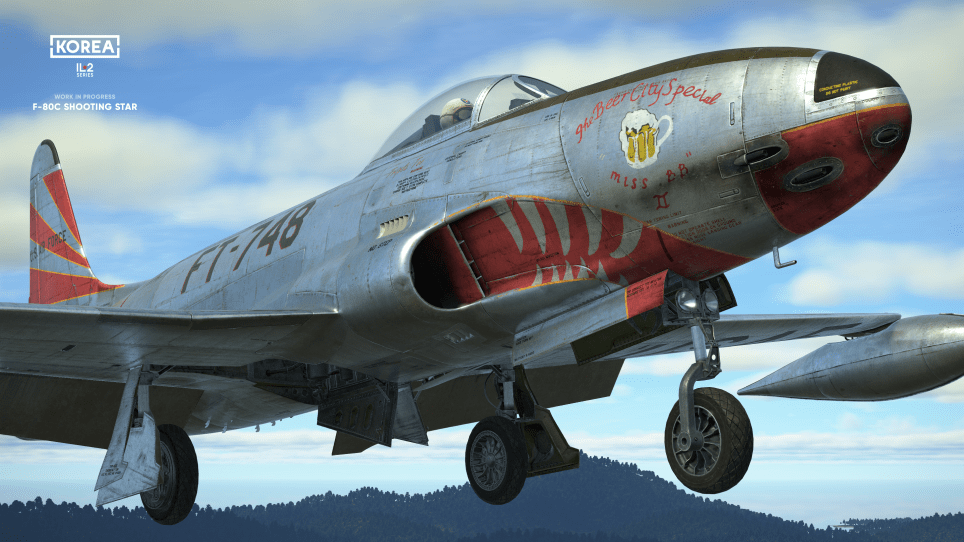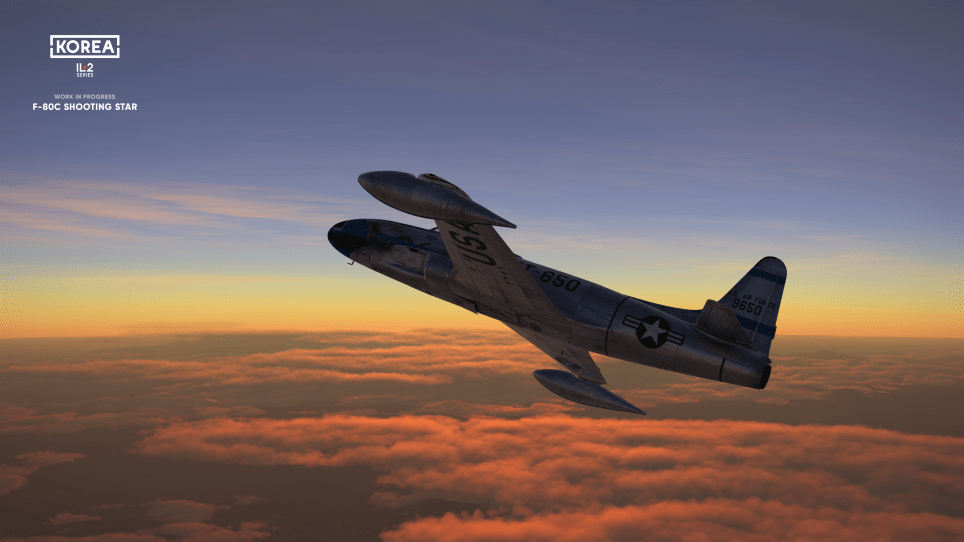Dev Blog #5
Hello everyone!
Today is a short story before the release of the next "Brief Room" episode next week. It is dedicated to the F-80C Shooting Star jet fighter-bomber. This aircraft was the main workhorse of the US Air Force during the early stages of the Korean War. The prototype of the aircraft first flew in January 1944 and was a classic representative of the first generation of fighter jets. At the same time, the aircraft had a very progressive innovation — for the first time in the practice of American aircraft construction, a jet engine was placed inside the fuselage of a combat aircraft. It is interesting to note that this layout of the engine and its air intakes would be used around the world for a very long time.
Today is a short story before the release of the next "Brief Room" episode next week. It is dedicated to the F-80C Shooting Star jet fighter-bomber. This aircraft was the main workhorse of the US Air Force during the early stages of the Korean War. The prototype of the aircraft first flew in January 1944 and was a classic representative of the first generation of fighter jets. At the same time, the aircraft had a very progressive innovation — for the first time in the practice of American aircraft construction, a jet engine was placed inside the fuselage of a combat aircraft. It is interesting to note that this layout of the engine and its air intakes would be used around the world for a very long time.
Originally designed as a fighter, the aircraft was increasingly used as a fighter-bomber from the end of 1950. This was due to the appearance of the enemy’s 2nd generation MiG-15 jet fighters. However, for such a fighter there was a lot of combat work in the Korean War. The F-80C modification differed from previous ones in the presence of an ejection seat for the pilot, a new, more advanced version of the General Electric J33-A35 engine with improved performance, as well as improved machine gun armament.
The "C" version is armed with a battery of six .50 caliber M3 Browning machine guns, each with a rate of fire of 1200 rounds per minute. External ordnance can include up to 4,000 pounds of rockets and bombs on 4 hardpoints. Speaking of rockets, the Shooting Star can carry up to eight 5-inch HVAR rockets. The outermost hardpoints below the wingtips were often fitted with 165-gallon jettisonable fuel tanks. It was also possible to mount larger 265-gallon Misawa fuel tanks.
The mechanization of the aircraft was represented by landing flaps on the wing panels and air brakes under the forward part of the fuselage. The nosewheel was free-castoring, so consequently, the aircraft had to be controlled mainly by separate wheel brakes during taxiing.
The General Electric J33-A35 engine is a derivative of a British engine; it has a centrifugal compressor and a single-stage turbine. The engine has 14 separate combustion chambers, as well as a water-alcohol injection system which was a hallmark of the A35 modification. Injection of the mixture increases power by more than 15%. The main engine block is installed closer to the aircraft’s center of mass, and from there to the tail nozzle, accelerated and heated air flows through a long heat-resistant pipe with a heat-insulating coating. A protective mesh is installed at the front of the engine to catch large and medium-sized debris during operations from poorly prepared airfields.
In the "Korea — Il-2 Series" simulator, the F-80C will be represented in 11 squadrons, some of which used the aircraft until the end of the war.
In the "Korea — Il-2 Series" simulator, the F-80C will be represented in 11 squadrons, some of which used the aircraft until the end of the war.



